Search results
5 results found.
5 results found.
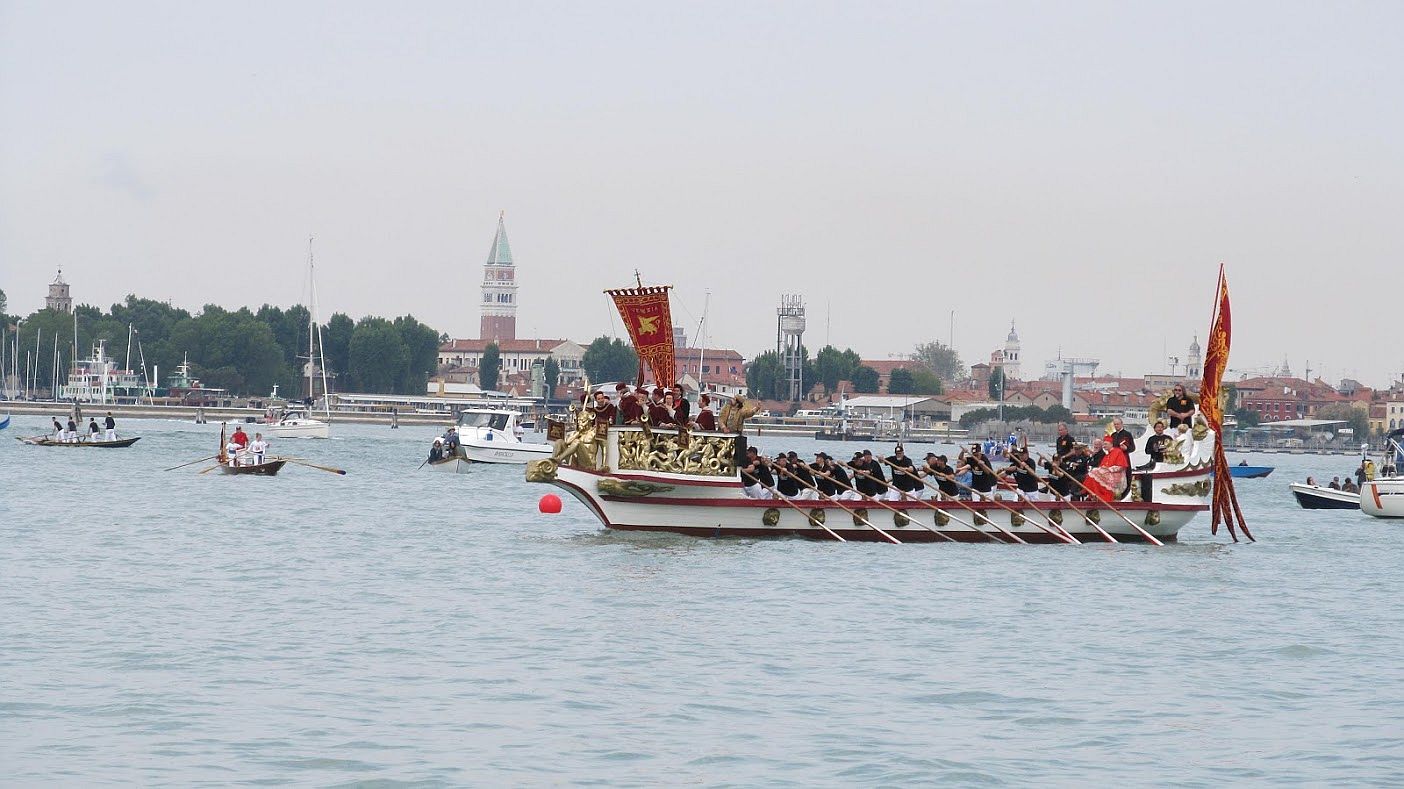
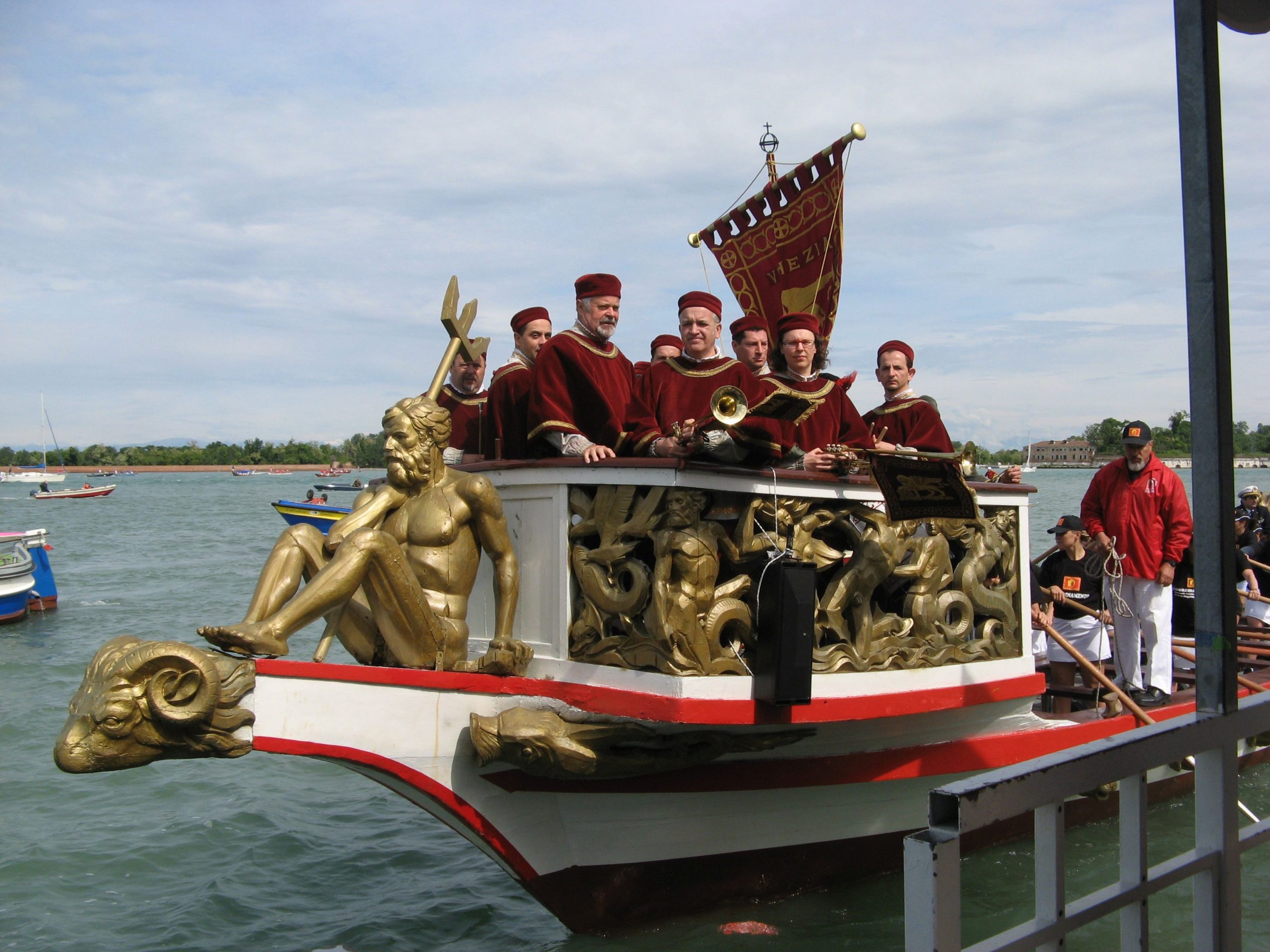
May is a special month to many people, for many reasons. I believe a million poets have made that observation.
For me, the month of roses and gobies and European flounder (there is definitely a poem in there waiting to be lured out), has always been one of the most stressful in the whole year. I would begin dreading May in February, because of two enormous, hence exhausting, annual events that involved Lino and me: the festival of the Sensa (Ascension Day) and the Vogalonga. (“Involved” means planning as well as execution; Lino is part of the Committee of the Sensa, and I would work in the registration office of the Vogalonga for the two weeks leading up to the event.)
Then I would participate in both events — the boat procession, or corteo, for the Sensa, proceeding from Venice to the Lido, and the Vogalonga, which when everything went well would take a good five hours. Things did not always go well; one year it took us seven hours to complete it, due to contrary wind and/or tide, some less-than-prepared rowers in our boat, etc. That’s not a complaint, just a statement. These things happen and you just grit your teeth and carry on. Apart from the rowing itself, we’d see many friends only once a year for the Vogalonga, so any empty spaces in the calendar or the energy of that weekend were filled with convivial (fancy word for “running far into the night”) gatherings in apartments, restaurants, boats, etc.
But this May is abnormal, melancholy, bizarre, because both events have long since been canceled, taking all that annoying confusion, exhaustion, and tension with them. And I’m still not happy! Because this is weird!
The Sensa has been reduced to the commemorative mass at the church of San Nicolo’ on the Lido; it will be attended by the usual personages, but there will be no boats, no tossing of the wreath or the ring, and no races. Why? Because GATHERINGS ARE FORBIDDEN. People would want to GATHER along the shore to watch, and the rowers would certainly be gathered in their boats (forbidden), and the boats would be gathered, and just no.
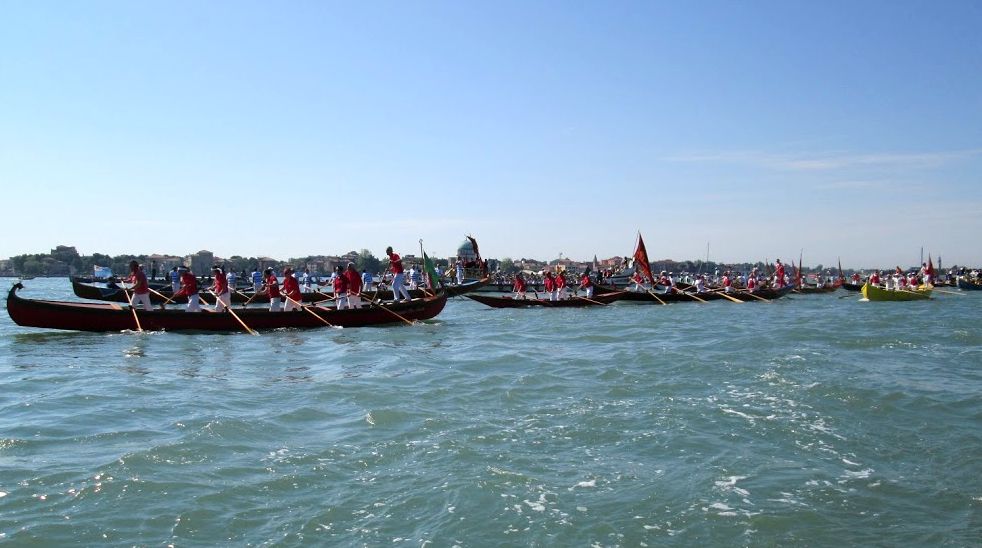
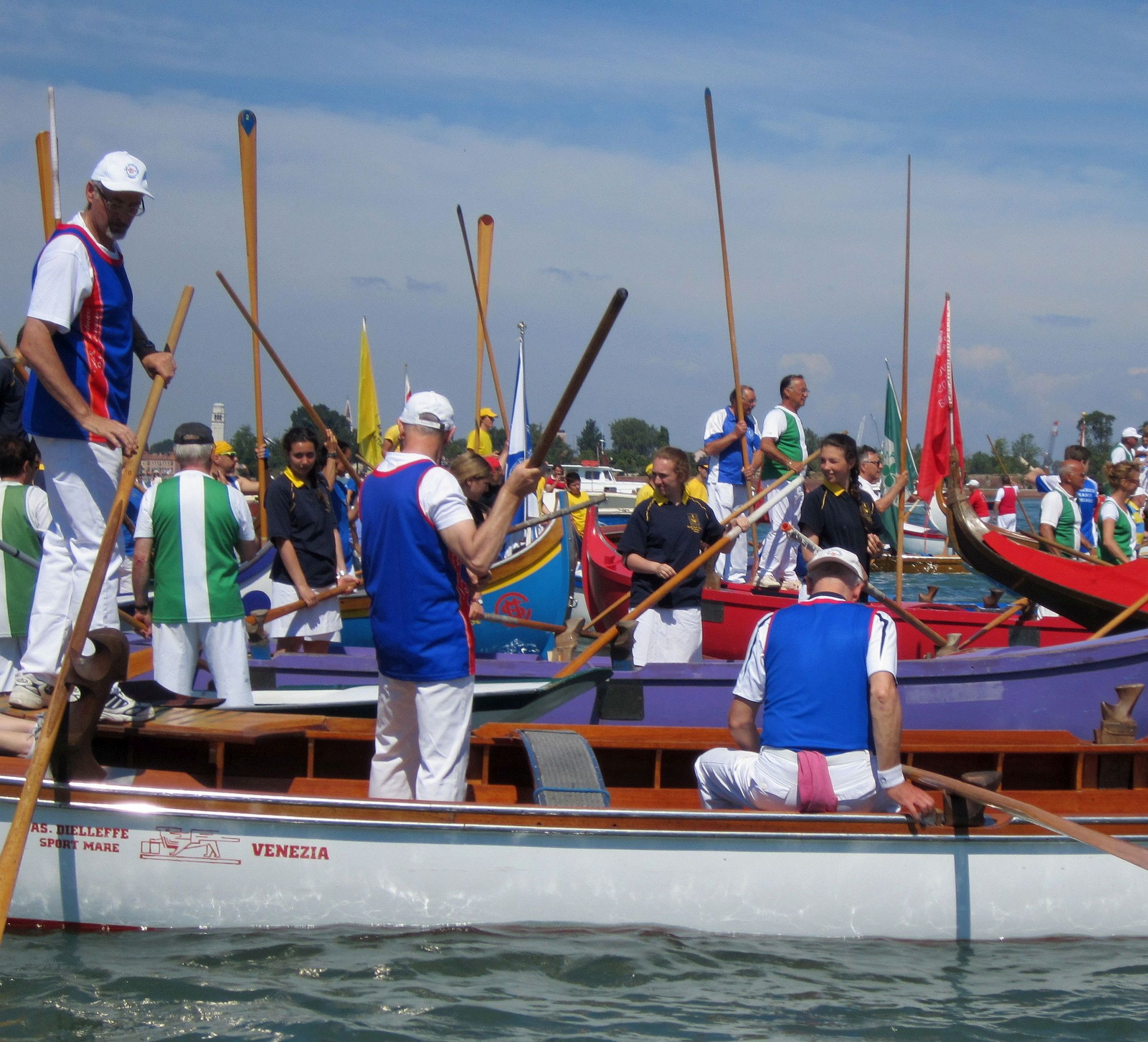
I suppose some private boats could form a procession, each one rowed by the permitted maximum of two people, but that would be even sadder than no boats at all. I told Lino I thought it would extremely cool if every boat club would send their big representative boat, but instead of a full crew each one could be rowed by two people (even the boats that are set up for ten, or 12, or 14 people) or — even better! — rowed by just one person. He said he didn’t think there were that many individuals capable of rowing a big boat by themselves, so there goes that little inspiration. Also, only I have this sort of crackpot idea.
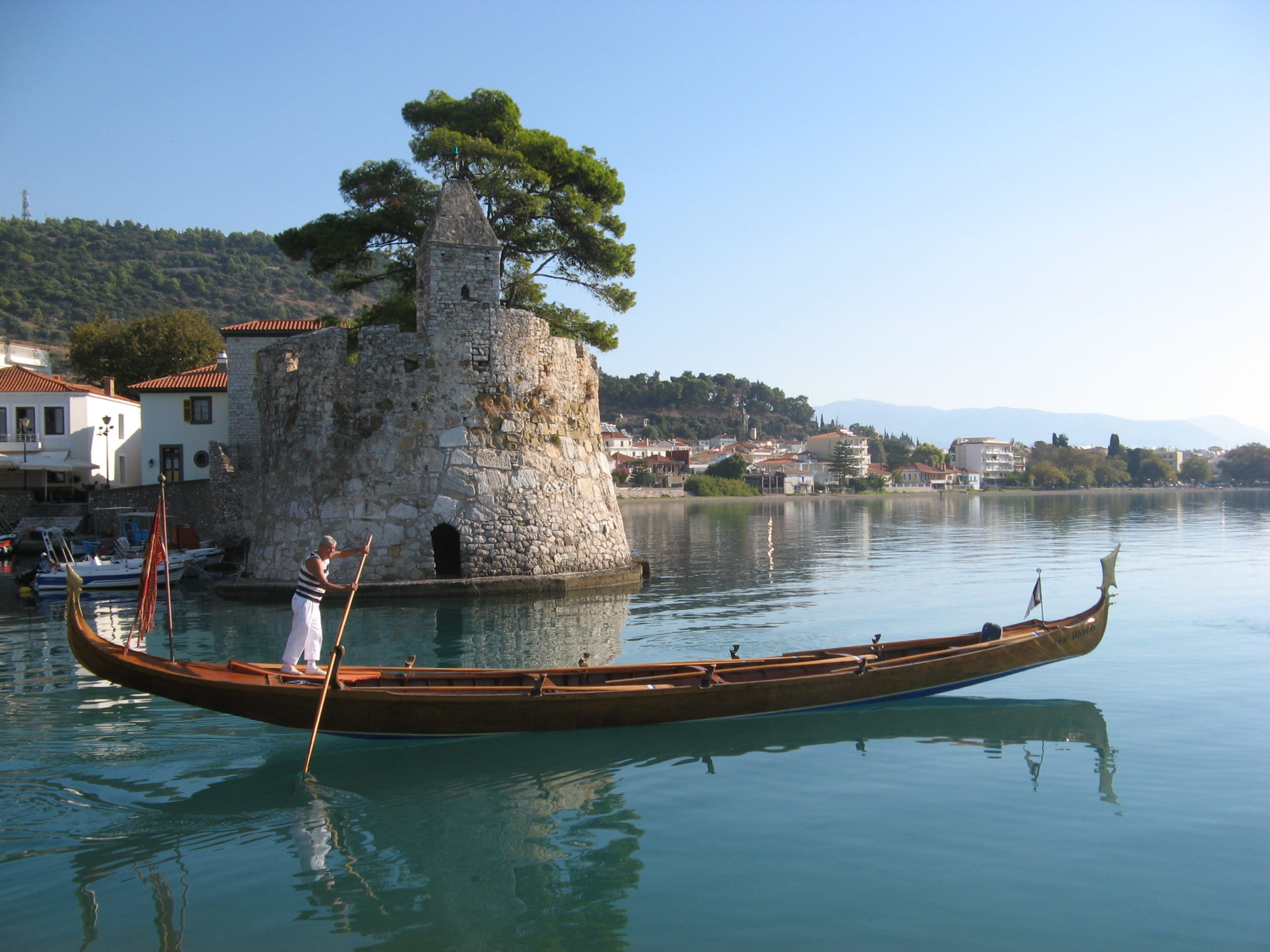
But back to reality. The limitations on rowers would make it impossible to form a corteo. Here is the list of regulations from our boat club; notice that using the boats requires booking a time slot to ensure that only the rowers going out are permitted to even be in the clubhouse. Fine, it was just a fantasy.
“It is forbidden to use the changing rooms and showers in the club. Boats may go out with one rower. Boats with two rowers can go out if they respect the minimum distance of two meters between them in the boat. More than two rowers can go out without respecting the distance requirement EXCLUSIVELY if they are family members who are living together. Use of the mask is OBLIGATORY (worn in the correct manner, that is, covering the mouth and the nose) before and after rowing (one boards and descends from the boat with the mask on). Booking the time of going out and returning will be made EXCLUSIVELY on the WhatsApp group of the club, allowing 20 minutes between exit and return time in order to avoid meetings (overlapping, running into other people, however you want to put it) in the clubhouse. If on return you find that another boat is preparing to exit the club, wait at a distance till the other boat has departed. Seeing the situation, to guarantee the safety and health of all members, the Council of Directors will look at the recorded videos to ensure that all the members respect these rules. Anyone who goes out MUST, on return, wash the club’s boat and oars with water and bleach-based soap provided in the club.”
The Vogalonga — this year would have been the 46th — was scheduled, as always, a week after the Sensa — May 31, to be precise. It has never been canceled, even in the worst weather. A pandemic is clearly so much worse than weather. Besides, no one can travel, the hotels are closed, and just to review the basics: Gatherings of people are forbidden. If some 2000 boats in the water don’t constitute a gathering, then we need a new definition.
So the two big events that made May matter have been expunged and left only its husk ready to fall off the calendar just like March and April have already done. What an ignoble end to a once-princely month.
Happily, spring is proceeding with its usual nonchalance, bestowing any number of special gifts (do they still qualify as gifts if you count on getting them every year?). Blackbirds singing at dawn and at sunset, the limetrees just beginning to waft their delicate perfume along viale Garibaldi, the first magnolia on the tree next to General Emo Capodilista. The signs of the season haven’t failed us.
And we’re well underway with the artichokes (their moment is almost over), and fresh peas and asparagus. The fruit is in that awkward stage between winter and summer — we’re bored to death with apples and bananas, but the first cherries are expensive and flavorless, the apricots should be ashamed of pushing themselves forward so aggressively because they are definitely not ready yet, and some vendors are offering melons, for Lord’s sake. Everybody knows that melons were put on this earth to save your life in July and August; in May you might as well just sell photos of melons, the taste would be the same.
Fish, however, are having their moment. “Quando la rosa mette spin’, xe bon el go’ e el passarin.” When the rose puts out its thorns, the gobie and the flounder are good. Seppie belong in this category too, but it doesn’t rhyme.
Lino, who has fished all year long all his life, tells me this: “The go’ are always in the lagoon. The passarini lay their eggs in December and go out into the Adriatic; they come back in between March and April. The seppie begin to come into the lagoon in March. In May and June the gilthead bream, striped seabream and sea bass come in to lay their eggs….” I know things are proceeding according to plan because we have seen little swarms of fingerlings in the canal several times.
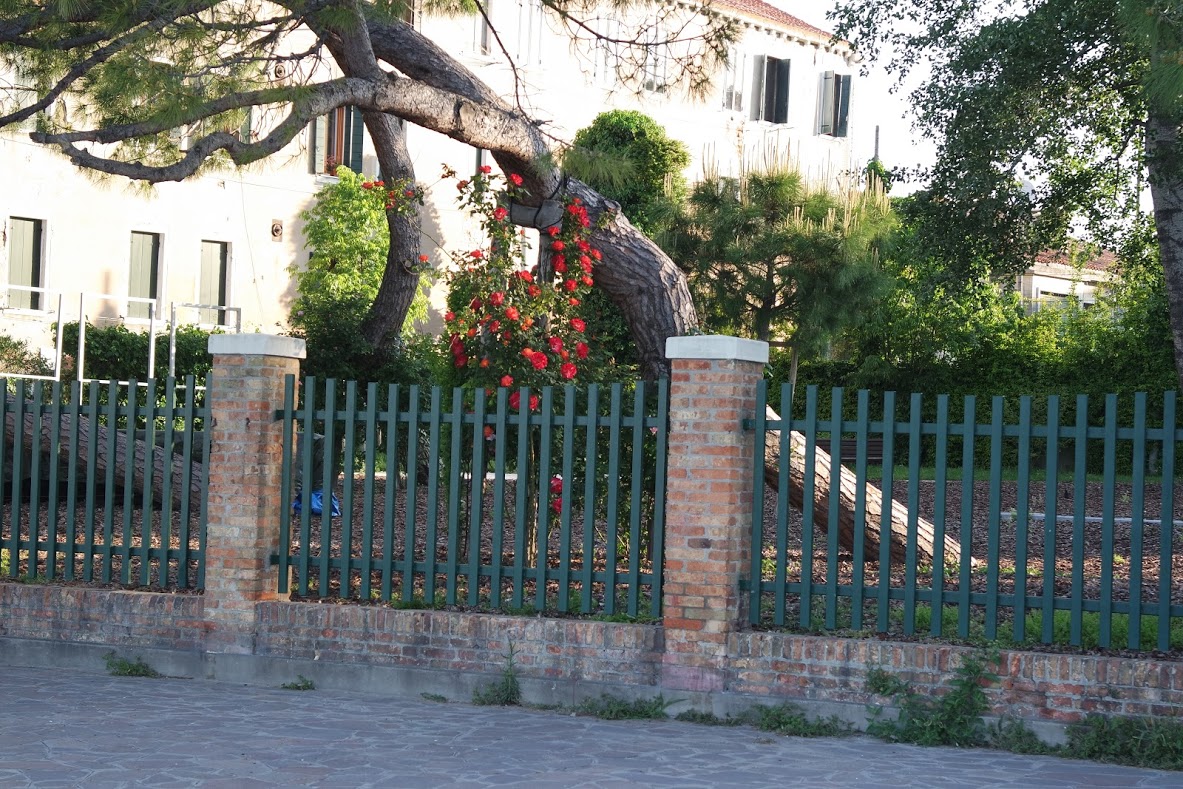
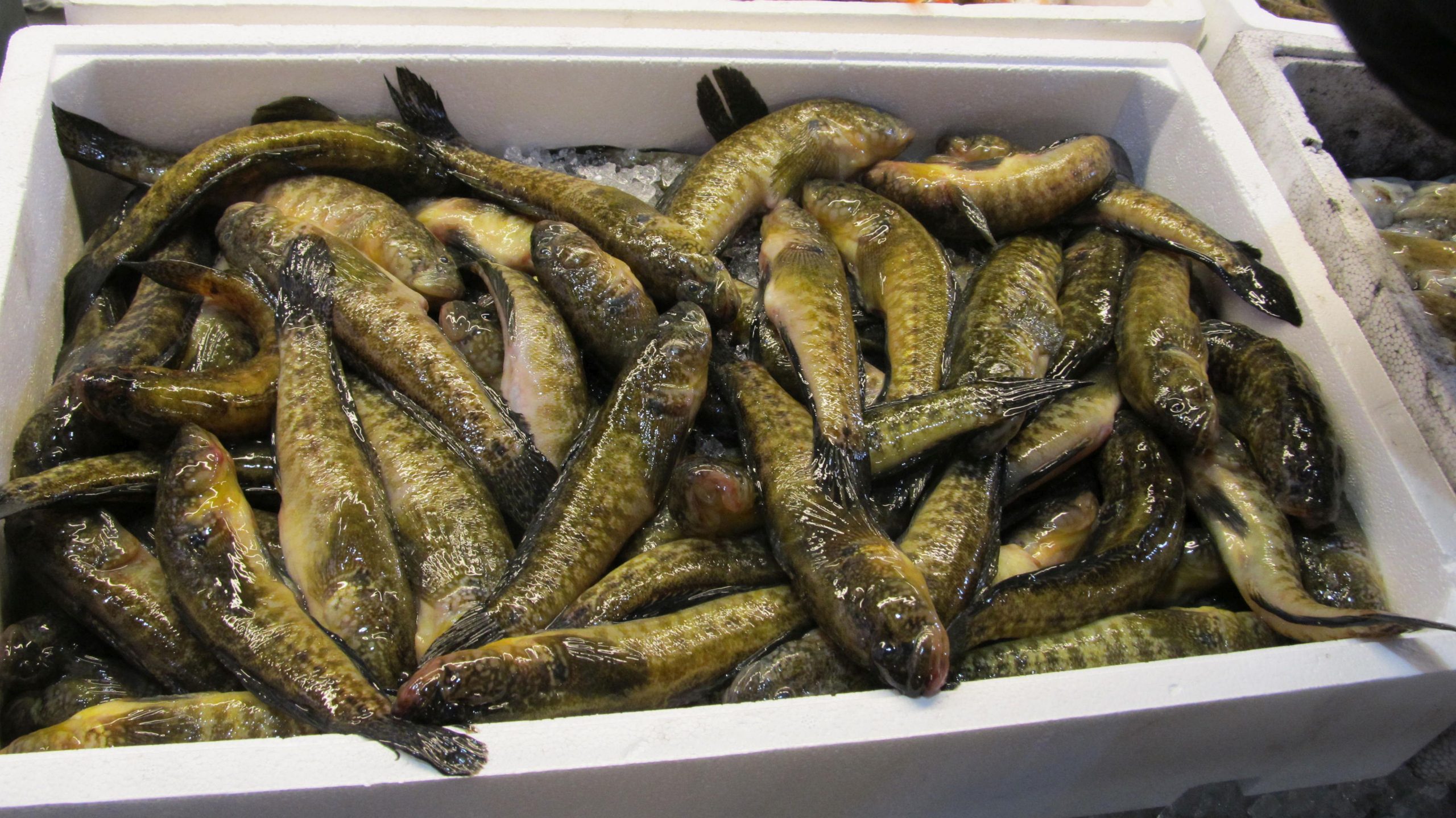
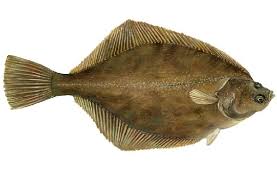
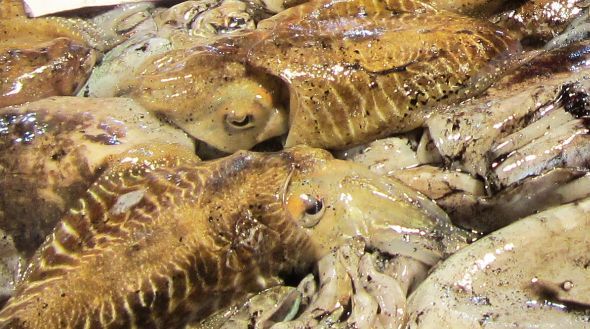

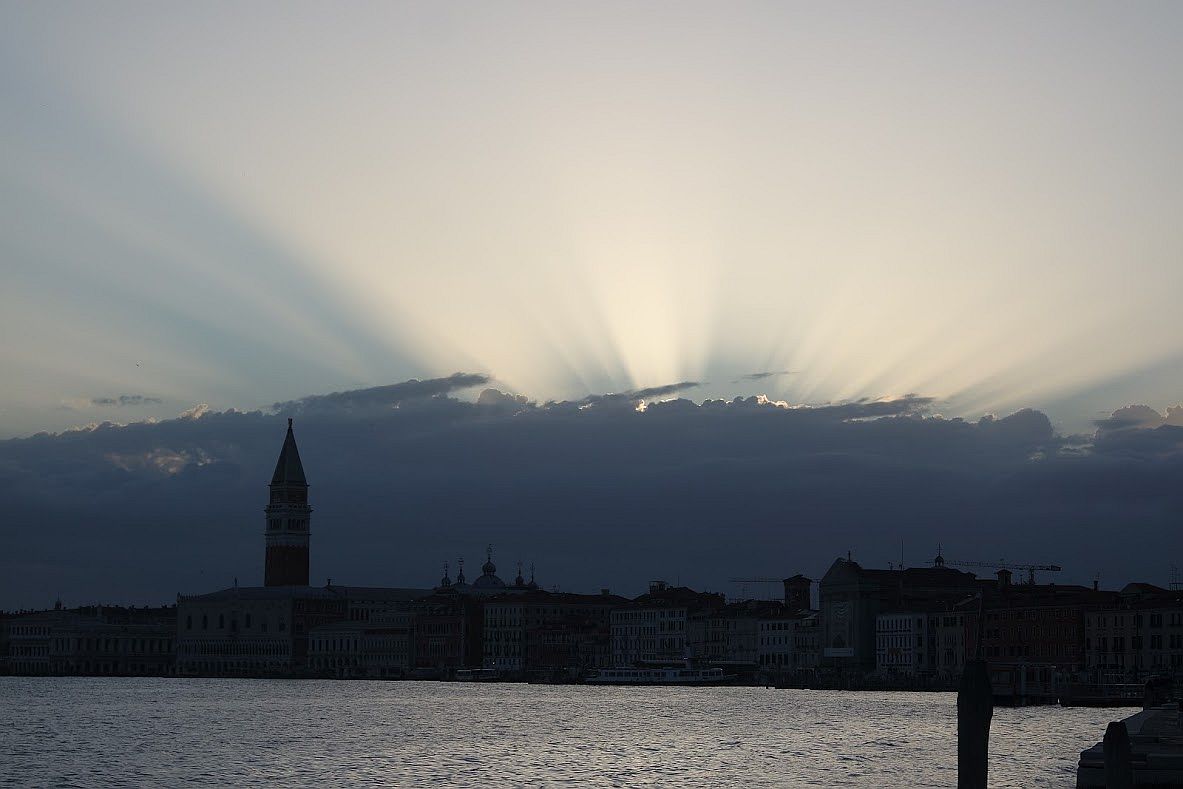
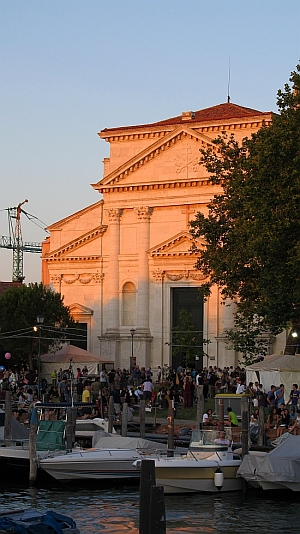
The dust has now settled on the festa of San Piero de Casteo and everyone is recovering (or not) from the toil, excitement, racket, and nearly suffocating odors of frying fish and charring ribs.
Fine as all this may be, it used to be, in many ways, even better. Lino Penzo, president of the Remiera Casteo (our very local rowing club), was born in the next campo over, an open space named Campo Ruga. And he remembers it the old way.
“There wasn’t anything here,” he said, looking at the stretch of grass in front of the church. The party was in Campo Ruga where, to hear him tell it, as many people lived as in Albuquerque, New Mexico. Families everywhere. Kids everywhere. Drama without any pause for station identification. “We used to put cushions on the windowsill,” Lino said, “and just watch what was going on outside. It was like the theatre, it never stopped.”
There was the day a certain man went across to the osteria to drink some wine. Evidently his wife expressed the opinion that he was doing this far too often, so he locked her in the house and went anyway. So she fixed up a bedsheet and let herself down through the window. I don’t know if she chased him around the campo brandishing a rolling pin, but I can imagine it.
And there was a woman whose nerves would give out whenever there was a fight in the family (evidently she preferred the “flight” option of the famous pair of possibilities), and she’d suddenly go into a swoon. Everybody knew this, so when anybody heard the sound of nearby strife the men in the cafe would put out a chair for her. They knew she’d be needing it to fall onto, sooner or later, so they got ready.
And there were shops everywhere. The series of doors we see today, many of them shut forever, belonged to a collection of every enterprise necessary for human life. Two (two!) bakeries, fruit and vegetable vendors, a butcher, a cheese and milk shop, a cobbler, probably also an undertaker, though he didn’t mention it. I don’t remember the rest, but they were all there. You didn’t have to go more than 20 steps from home to buy everything you needed. As in most Venetian neighborhoods, going to San Marco was unknown, mainly because it was pointless. This was the world.
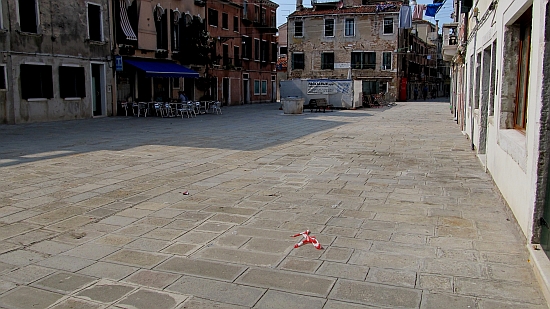
As for the festa, it was celebrated in the campo, and involved mostly eating. Long tables were set up, where everyone sat and ate tons — “tons” — of bovoleti, and sarde in saor, and other traditional Venetian food.
Eventually one day somebody suggested moving over to the big empty grassy area in front of the church, and put up a little stand with some food. From there, the festa just got bigger and bigger, and ultimately never went back to Campo Ruga.
So now we have live music and big balloons and grilled animals and gondola rides, and a big mass with the patriarch, and even a cake competition. It’s like the county fair, without quilts.
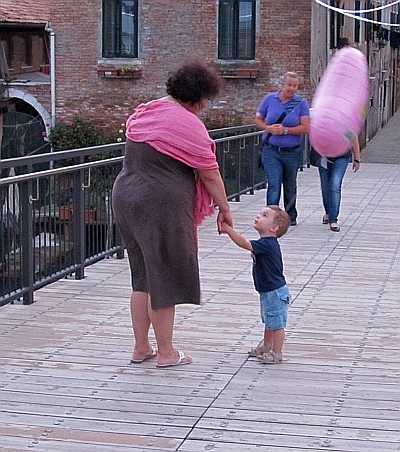
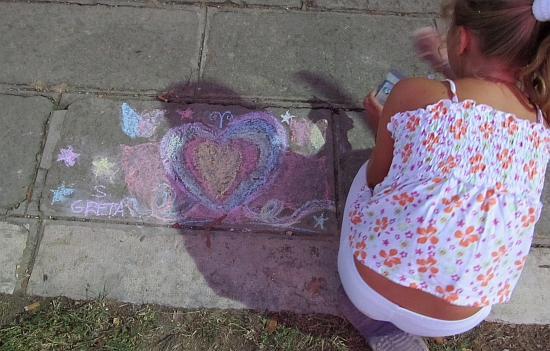
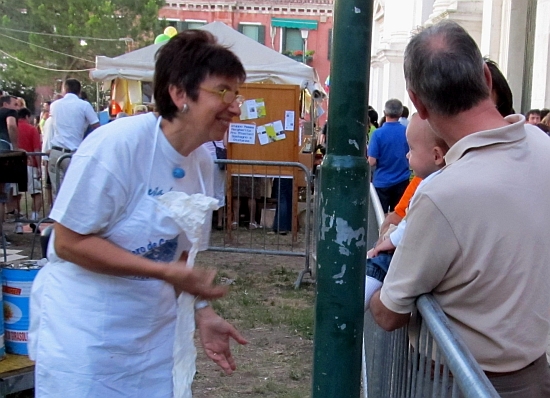
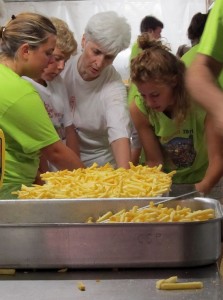


This past weekend we reached the summer’s festive culmination, the Feast of the Redeemer. But this year the routine was slightly different: No boat, no fireworks. Sounds like heresy, I know. It is heresy. I might as well just call it a club cookout and forget all the historical/traditional frippery.
Things have changed because now we’re in a different rowing club, and in a different place altogether in our minds and spirits. And while we could certainly take a boat and load it up with the usual bovoleti, watermelon, sarde in saor, pasta e fagioli, and all the other traditional noshes to get you from sundown to the fireworks, we just don’t feel like it.
One main reason we — and several other old Venetians I asked at random — don’t feel like going in a boat anymore is because of all the other boats. It’s one thing to be crushed amid swarming hordes of people ashore, it’s quite another to find yourself in the dark with thousands of large motorboats operated by people who are drunk and who don’t know how to drive. Obviously, this was not a problem when Lino and his cohort were growing up. It’s pretty hard to hurt anybody with a wooden rowing boat, at least not to the degree a big boat powered by 90 or 140 or more horses.
In fact — not to cast a pall over what I intend to be a jaunty little post — two young women who were aboard a motorboat zooming back to Chioggia after the fireworks have not yet made it home. Because the boat ran into a piling at high speed — just about every motorboat leaving Venice was going from fast to pretty fast to crazy fast — and one woman hit her head against the other woman’s head. The first woman lingered about a day, and is now in heaven. The other woman, who had snagged a ride home with them just on an impulse, is in the hospital recovering from various fractures. As for the driver/owner/ friends who were aboard, I don’t know what state they’re in, but two of the boys/men/whatever have fled. I tell you this only to indicate that I am not inventing notions about how dangerous it is out there. What surprises me is that disaster struck so few. Not much comfort to the families of all involved.
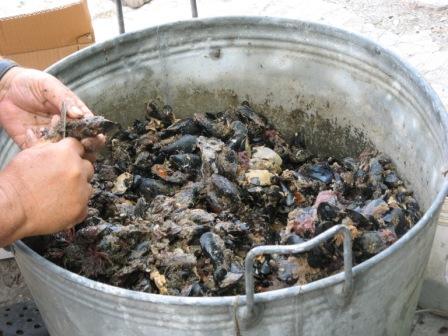
So Friday morning (Saturday night being the high point), Lino and I went to the club to help clean the mussels. A vast feast — probably more Rabelaisian than Lucullan — was planned, and our contribution was to do some of the prep work. Little did I know what ten tons of extremely wild mussels will do to your hands.

Forget how they look, in their just-scraped-off-the-pilings dishabille. They’re ghastly, I agree. Even I gave some serious thought to striking mussels off my must-eat list for, like, forever. But the ones we took home, all clean and shiny, were absolutely delectable. So you know, don’t judge a mussel by its encrustations.
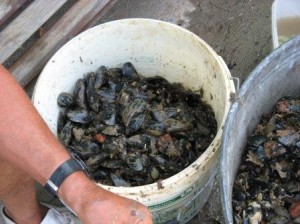
After spending hours pulling and scraping off plant and all sorts of other matter, not to mention rending them from each other one by one, my hands felt as if I’d been pulling nettles. Three days later, a few fingers were still a little red and swollen. Now I understand why one of the men put on rubber gloves. I live, I learn.
A certain number of men got to cooking. There were great things to eat but there was also fifty times more than anyone could ever consume. Fried shrimp and deep-fried fresh zucchini and sarde in saor, the aforementioned mussels, grilled pork ribs and sausage and lamb chops and fresh tomatoes out of the garden in the back, and — I begin to lose the thread here — there was also something I’d never even heard of, much less tasted: deep-fried sage leaves. You can have your fried zucchini blossoms, I’m going to take the sage any chance I get.
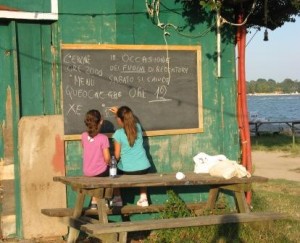
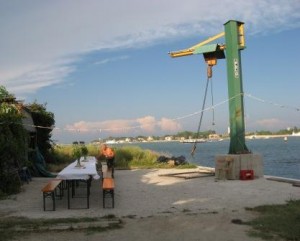
After that the sheer quantity began to press down on my brain — I know I ate many more things, but I can’t remember what. At a certain point one of the wives pulled out a homemade frozen dessert called zuccotto. The recipe I looked up here makes it sound elegant, but what we ate were pieces that seemed to have been hacked off the Ur-zuccotto with a dull cleaver. And of course there was watermelon, which is utterly non-negotiable. You can skip a whole batch of things, but yes, there will be watermelon.
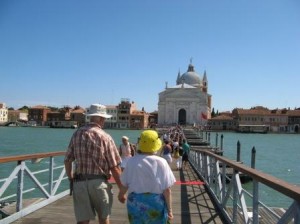
We watched the fireworks from afar, enjoying the highest ones and intuiting the lower ones by the shimmering glow through the treetops. It was more comfortable than sitting in a boat right under them, but much less exciting. I don’t see the point in fireworks if the’re not going to be exciting. You might as well watch them on TV, or through the wrong end of a telescope, and wear earmuffs.
After the fireworks – or as they put it, “pyrotechnic display” — the countless motorboats began to stream homeward. The paper estimated that some 110,000 people came to party, but didn’t hazard a guess as to how many boats. There were so many they were tying up to public lighting stanchions, not at all a good idea.
We all sat there, sticky with watermelon juice, watching the migration. It was like the wildebeest at high speed, with big roaring mechanical voices, each with a little red light gleaming from its left flank.
Next day: The races. Now they were exciting. Lots of wind, lots of tension, lots of — unfortunately — waves. Something is going to have to be done, the racers can hardly row anymore. But that’s a subject for another day.
For those who are interested in a few more statistics, the spectacle (fireworks, etc.) cost about 100,000 euros. Doesn’t sound like much, I know — actually, I had the impression that the show was shorter than some other years.
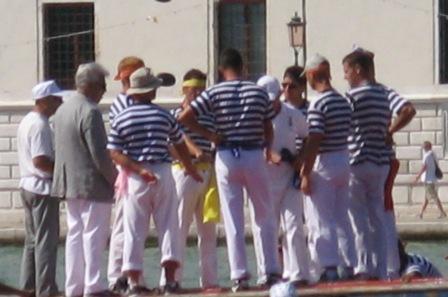
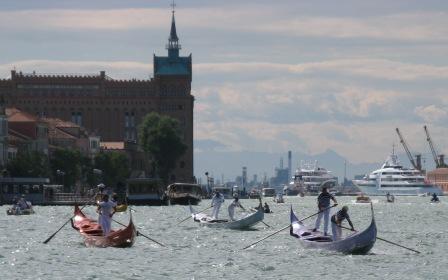
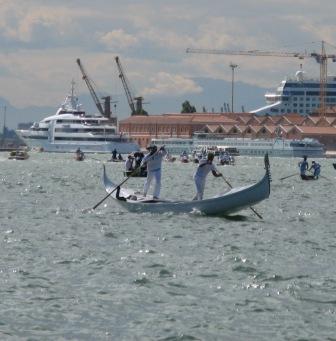
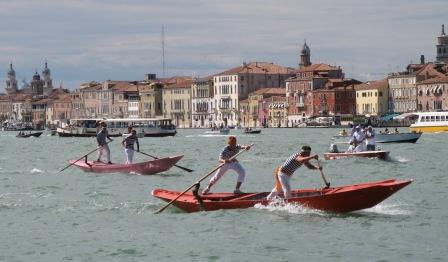


I don’t mean to pound this topic into the mud like a piling or anything, but I just thought I’d mention two more flavors that make Venice real to the old gustatory organs. By which I mean things I eat here that I haven’t really found (or taken seriously) elsewhere:
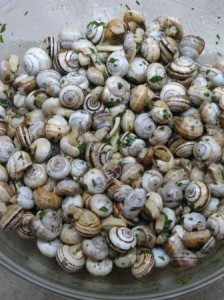
Snails, or bovoleti (boh-voh-EH-ti). Think escargots, with absolutely no pretensions — the polar opposite of pretensions. And absolutely no taste, either, which is why they are boiled, then thrown in a bowl with an overload of sliced fresh garlic and olive oil. Snails are merely an excuse to eat oil and garlic, in my view. It couldn’t possibly be for their nutritional value. Or their texture, either. (The garlic helps you get past that, too. Those old-time hungry people thought of everything.)
Bovoleti show up in late spring and are sold by fishmongers; odd, considering that your snail is a land creature, happier clinging to some plant stem in a field somewhere. They’re on sale until after the feast of the Redentore (third Sunday in July).
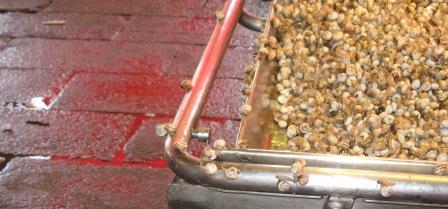
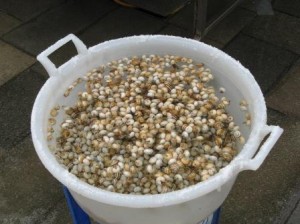
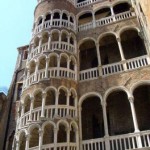
In fact, that festival is their moment of glory, if snails can be said to have one, because there they demonstrate their other sterling quality, as entertainment. Eating them gives you something to do while you’re waiting for the fireworks. Slippery little shell in one hand, toothpick in the other, the point is to snag and pull out the bit of whatever you’d call that material that used to be alive, and eat it. The waters of the Giudecca Canal can be speckled with these shells, tossed overboard by oily-fingered people who are beginning to run out of conversation.
The other special item would be fondi, or artichoke bottoms. Perhaps you didn’t realize that an artichoke has a bottom, but usually there is somebody near a fruit and vegetable stand who has been assigned a mountain of big tough artichokes and told to cut off all those leathery outer leaves and other useless bits (which is most of the artichoke) with a knife as sharp as a billhook, then carve a neat disk from what remains.
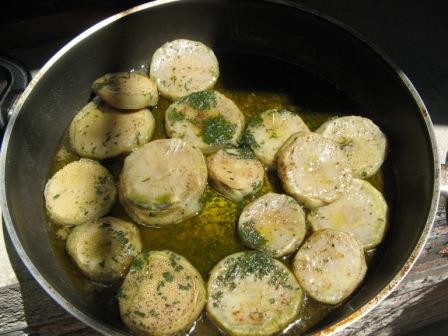
Simmer slowly in — you know what’s coming — oil and garlic, throw some minced parsley over them, and there you have your daily thistle.
Bit of useless information: You may discover that in Venice there are two words for artichoke used interchangeably: carciofo and articioco. Carciofo (kar-CHAWF-oh) is the standard word, but across northern Italy, from Friuli to Liguria, you’ll find variations on articioco (ar-tee-CHOKE-oh). Such as: articjoc, articioc, articioch, and articiocc. Both carciofo and articioco ultimately derive from Arabic; carciofo from kharshuf, and articioco probably from the Old Spanish alcachofa, which in turn came from Arabic.
Sometimes words are almost more delectable to me than the thing they represent. But I’ll stop here. Must. Go. Eat.
